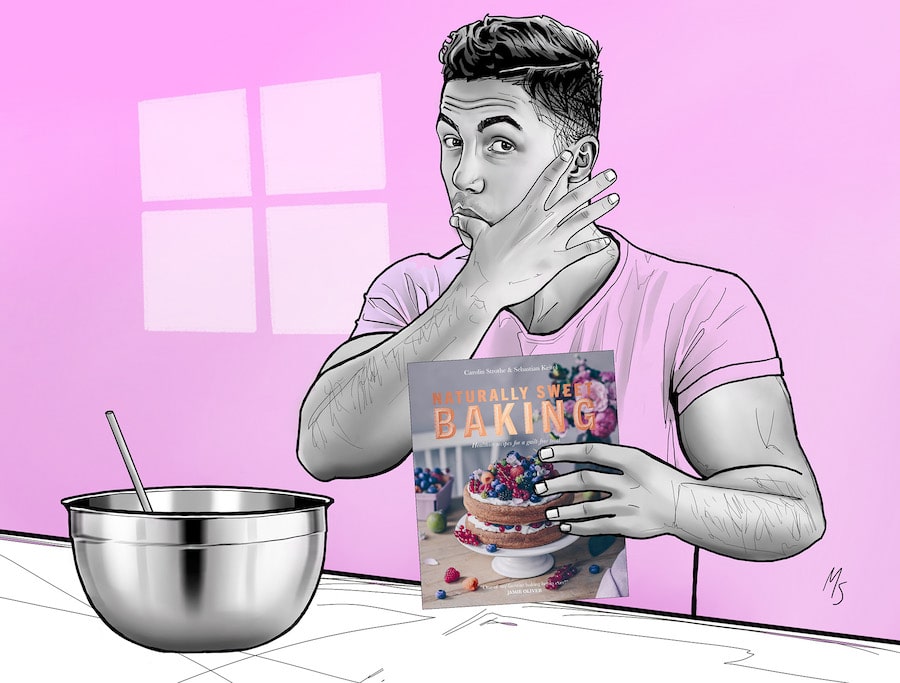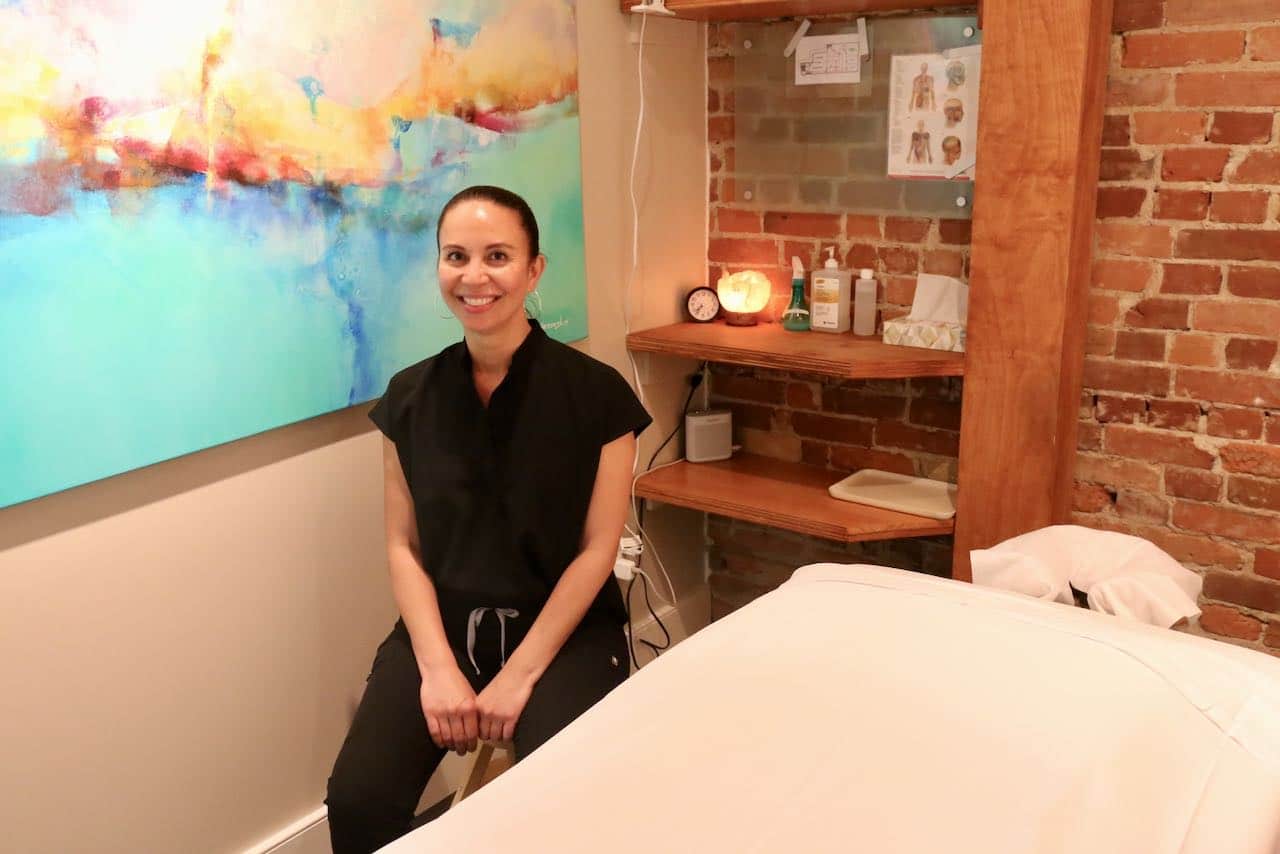I’m hearing a lot of buzz about stashing your smart phone and whiling away an afternoon old school. Coffee with friends. In person. Ambling through the great outdoors. Or reading a book, my fave off-line activity.
Here are my 5 must-reads for June 2019, including a baking book offering healthier recipes for guilt-free treats (wedding shower perfect!) and a crime novel that rethinks the genre.

Space: A Visual Guide
If you’re lucky enough to be camping or at a cottage this summer I bet you’ll be sipping a cocktail and stargazing. So spend some time with Space: A Visual Guide (DK Publishing) before you go.
This is a totally awesome book. Space: A Visual Guide unfolds the mysteries of the universe in language non-astronomy nerds can understand and wraps up the science in astonishingly beautiful images. Check out the shot of the interior of the Tarantula Nebula on page 266 and 267 – it would make even Emperor Palpatine weep.
Space: A visual Guide starts with the history of astronomy. Did you know that the birthplace of astronomy was in Babylonia (present-day Iraq)? In 700 BCE the Babylonians summarized what they knew on a pair of baked clay tablets only 8.4 cm high. Oh yes. They measured the length of the year as approximately 360 days, divided the circle of the sky into 360 degrees, subdivided each degree into 60 parts and introduced the 24-hour day. You’re welcome.
The Universe, the second chapter, gets down to business, introducing you to all the matter in outer space – stars, planets, comets, etc.- including spreads on each planet in the solar system. The Big Bang Theory – the real one, not the show – is the best model of how the Universe began. About 13.8 billion years ago, a violent explosion created all the energy and matter in the cosmos in a fraction of a second. Yikes!
The book closes with a Monthly Sky Guide showing the stars as they appear each month around 10 p.m. And an Almanac outlining the dates of the new and full Moon, eclipses, transits and aspects of planets you can see without binoculars or a telescope till 2031.
Space: A Visual Guide, exclusive to Chapters/Indigo, would make a fantastic Father’s Day gift. Add a pair of binoculars and I expect you’ll win the inheritance lottery.

Naturally Sweet Baking
Described by Jamie Oliver as one of his favourite baking books ever, Naturally Sweet Baking (DK Publishing2019) offers more than 70 mouth watering low sugar or no sugar recipes, many of which are also gluten- and dairy-free.
This is no mean feat, as the authors point out. Our love of sweet things is a primal survival instinct. Apparently we get our first taste of sugar from breast milk, something else to blame your mother for.
How do they manage the low/no sugar boast and still create the sweet treats we crave? Natural sweeteners like honey and seasonal fruit. And the healthy part? Unexpected ingredients. How ‘bout Peanut Blondies made with chickpeas, peanut butter and dark chocolate. Super easy and downright delish. Or Double Chocolate Muffins topped with avocado and banana mousse? Avocado toast is so last year.
And vegetable recipes that go way beyond carrot cake and zucchini bread. Parsnip Cake with coconut, raisins and cream cheese icing. Beet Bundt Cake with poopy seeds, vanilla and pear. Squash Muffins with walnuts and olive oil. Who knew?
Naturally Sweet Baking recipes run from dead easy to slightly more complicated but no worries. Naturally Sweet Baking also gives you basic recipes you can build on, baking tips including the right pan for each recipe and prep and baking times so you can’t fail.
Once you get the basics there’s a chapter on how to up the ante with natural colourings and edible flower embellishment. So despite what you have heard, you can have your cake and eat it too. Seriously.

Starlight Tour
November 1990. Saskatoon. The night is brutally cold. Seventeen-year-old Neil Stonechild has been partying. OK, he’s drunk. On his way home, he disappears, his frozen body found three days later in a field outside of town.
Saskatoon police conduct a cursory investigation and conclude Stonechild died of alcohol and misadventure, despite the abrasions on his wrists, the scrapes on his face and the fact that he was missing a shoe, but his white sock was clean. Case closed.
Until 2000, when two more men were found frozen to death on the edge of town.
Were the rumours in the Indigenous community of starlight tours true? Were Saskatoon police arresting Indigenous men, driving them out of town in the dead of winter and dumping them in fields to walk home?
Darrel Night survived his starlight tour and when he encountered a sympathetic cop, he told him his story.The cop believed him and took it upstairs. And all hell broke loose.
Jason Roy, who witnessed Stonechild beaten, bleeding and handcuffed in the back of a cruiser that November night, stepped up with what he had seen.
Don Worme, one of the country’s most important Indigenous lawyers, took the case.And in some measure, history was made.
Starlight Tour is a powerful, anger-making indictment of our social justice system: systemic police racism, cops who have lost their moral compass and a community knowing their lives are worth less than others.
You May Also Enjoy Reading…
- Charlotte’s Top 5 Must Reads for May
- Charlotte’s Top 5 Must Reads for April
- Charlotte’s Top 5 Must Reads for March

The Guest Book
OK, The Guest Book is a blockbuster-y summer family saga made for reading on the terrace, deck or dock!
It’s 1935. The Miltons – Kitty and Ogden – live the sort of old money life the rest of us only experience at the movies. A Metropolitan Home-worthy apartment on New Yorks’ Upper East Side. A marriage that everyone in their set envies. Two beautiful boys. It just doesn’t get any better than that, right?
Well . . . after an unthinkable tragedy, Kitty retreats into herself, and Ogden tries to bring her back the only way he knows how. He packs a picnic lunch, takes her sailing, and buys Crockett’s Island off the coast of Maine.
Crockett’s Island becomes the family’s refuge, especially for Kitty. Swimming, boating, gin and tonics and steamed lobster on the beach. Heaven, really – and the island comes to define who the Miltons are.
Fast forward to 1959. Post-war America has changed.
Ogden’s firm hires Len Levy, a smart, handsome ambitious man from a middle-class Jewish family. Len and the Milton’s daughter Joan have fallen in love but it’s a secret because Len is . . . Jewish.
Joan’s brother Moss invites Len and his African American friend Reg to a party on the island and the Milton’s principles and prejudices are oh-so-politely laid bare. Nothing is said, of course. The Miltons and their friends are emotionally distant, polite and clear about what one talks about and what one never mentions.
As the 21stcentury dawns, the Miltons still own Crockett’s Island but the money is gone, the mansion is crumbling and the grandkids decide to put it up for sale. Evie, Kitty’s granddaughter, comes to the island with her cousin to set things to rights before the sale. There, she discovers the collaboration that secured her family’s wealth, who her family really was, and why she always felt the outlier.
The Guest House aims to be more than a family saga. It targets the moral corruption and ultimate redemption of old money America. And it succeeds.

We Were Killers Once
Shame on you if you haven’t read Truman Capote’s riveting book In Cold Blood. Or at least seen the movie.
In 1959, The U.S. was gripped by the savage murder of the Clutter family in the small town of Holcomb, Kansas. There was no apparent motive, and almost no clues.
In 1966, Capote published In Cold Blood, a reconstruction of the murder and investigation that led to the conviction and execution of Richard Hickock and Perry Smith. He spent years researching the murders, intending to write a news story in the style of fiction.
The book was a runaway bestseller. He called his book “immaculately factual” but arguments raged about whether Capote had flown a little fast and loose with the truth.
OK. You need to know that in order to appreciate what Masterman accomplishes in We Were Killers Once.
Inspired by In Cold Blood and armed with facts from police records and archives, Masterman crafts a can’t-put-down crime story that asks: What if there had been a third killer? What if the trio also murdered the Walker family in 1959, in a similarly brutal fashion? And what if Hickock left a written confession laying out the truth – not Capote’s truth, the real truth?
Retired FBI agent Brigid Quinn and her husband Carlo, a former priest, prison chaplain and university professor, are later-in-life lovers enjoying a relationship neither of them thought they would ever experience.
Jeremiah Beaufort, now almost 70 and just released from prison after 30 years for drug trafficking, knows there is a written record somewhere that will put him on death row.
Beaufort discovers Carlo’s link to Hickock – he was a prison chaplain, remember – and convinced he has the letter, sets out to silence Carlo. He doesn’t know he will have to get through Brigid first.
We Were Killers Once is crime lit at its best: tense, tight and smartly written, with the kind of snappy dialogue you’ll share with the stranger sitting next to you on the subway.
Written by Charlotte Empey.Illustrations produced on iPad Pro with Apple Pencil by Mark Scheibmayr.
Some of the links in this story use affiliate links. This means that if you make a purchase through our site, dobbernationLOVES will earn a small commission at no extra cost to you. Your support helps us to produce comprehensive content.


